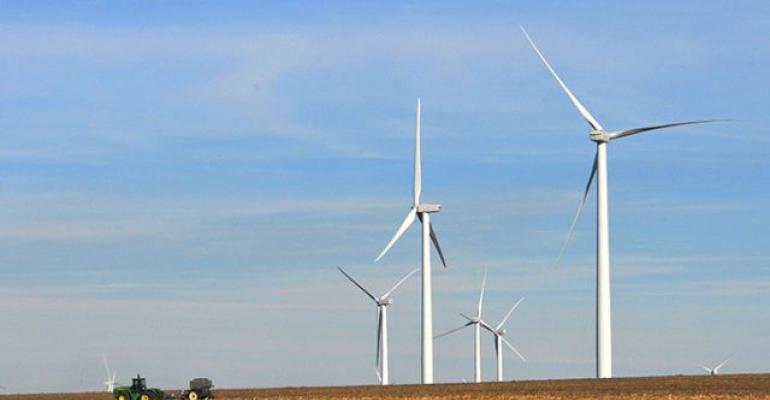In an announcement Friday on the project’s own Facebook page, the site manager of Facebook’s ongoing Ft. Worth Data Center construction project reported that a fourth building will be in the works, in addition to the three already under way.
“And, of course, the facility will be powered by 100% renewable energy,” wrote K. C. Timmons, “thanks to the more than 200 MW of new wind power that we worked with Citigroup Energy, Alterra Power Corporation, and Starwood Energy Group to bring to the Texas grid.”
The Shannon Wind Project is a joint effort between Alterra (with two “r’s” — not to be confused with the FPGA maker that Intel purchased, with just one “r”) and Starwood Energy. British Columbia-based Alterra completed acquisition of the wind farm project from its originator — Horn Wind LLC, a local rancher — in February 2014.
Since that time, Alterra made adjustments to construction activities to ensure that it qualified for federal tax credits. Presently, according to the U.S. Dept. of Energy, those credits amount to 2.3¢ per every kilowatt-hour produced by wind technologies.
This helped the firm to secure tax equity investments from Citi and Berkshire Hathaway Energy, the renewable energy project led by investor Warren Buffett.
When the wind farm switched on last December, it spun up some some 119 wind turbines, each of which would delivers 1.71 MW, for a total production of about 204 MW.
In May 2015, when the Ft. Worth Data Center project first broke ground, Facebook had pledged to invest $1 billion in the project. It had plans for just one building and an administrative center. At the time, the social media publisher said that 204 MW would be “more energy than we will need for the foreseeable future.” That future came quite soon, but Timmons’ statement Friday would indicate that five times the power draw will not be a problem for the Shannon wind farm.
The fact is, it may already be a problem for at least some of the residents of Clay County, in Northern Texas east of Wichita Falls, where the Shannon wind farm is already operational, and the possibility of expanding it was raised from the very beginning.
An organization actively opposed to the wind farm construction, Clay County Against Wind Farms, advocated against its construction, citing its detrimental effects on the rural landscape driving down property values; the huge, blinking red lights at night; and the possibility that the Texas state government might abuse its eminent domain rights whenever a wind farm needs to be, for example, expanded.
Prior to the commencement of commercial operations at Shannon, CCAWF sponsored local residents speaking out against the project in community meetings, attended by a prominent judge. In November 2015, one resident may not have done the group any favors by attributing the 2.3¢/kWh tax credit to a government conspiracy to substantiate climate change as a real thing.
“That climate change is man-made is one of the biggest lies forced on the American people,” Clay County resident Jack Pickett is quoted as having said, in a story published in the Clay County Leader [PDF].
The local NBC affiliate in the area reported at the time that one objector to the project made a more logical argument: that the reduction of property values negatively offsets any gains from power companies making use of the land. That value reduction could be accelerated, again, if the project has to be expanded.
In a September 2015 article for Site Selection magazine, Facebook’s director of data center strategic engineering, Rachel Peterson, admitted, “One of the major advantages — and why we targeted Texas in the first place — is its deregulated energy market and our ability to have a choice in our energy supply.” In states with more regulated markets, Peterson said, making headway in energy choice is more difficult, unless like Iowa, you’re willing to make adjustments to have Facebook building on your turf.





